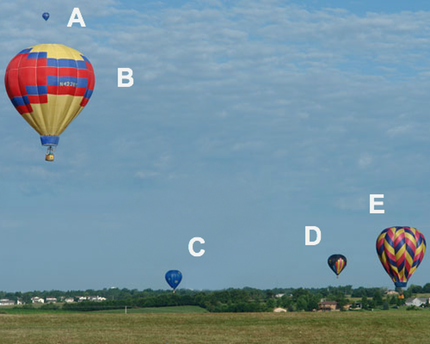
Breadcrumb
- Home
- Labs
- Foundational Labs
- Angular Size
- Pre-Lab Quiz: Angular Assessment
Pre-Lab Quiz: Angular Assessment
Use the image below to complete the quiz. Discuss each question with your team. Be prepared to explain the reasoning behind your team's answers after the quiz.

- Assuming all the balloons in the picture above are the same true physical size, which is closest to the observer?
- Again assuming the balloons are the same size, which is farthest away?
- Still assuming the balloons are the same size, where are B and E in relation to the observer and each other?
- E is twice as close to the observer as B.
- B is about the same distance from the observer as E.
- B is twice as close to the observer as E.
- B is four times closer than E.
- B is eight times closer than E.
- Now, let's change this assumption. Suppose C is twice as big as D. If C is 2 miles away, how far is D?
- 1 mile
- 2 miles
- 4 miles
- 3.659 miles
- It is impossible to say.